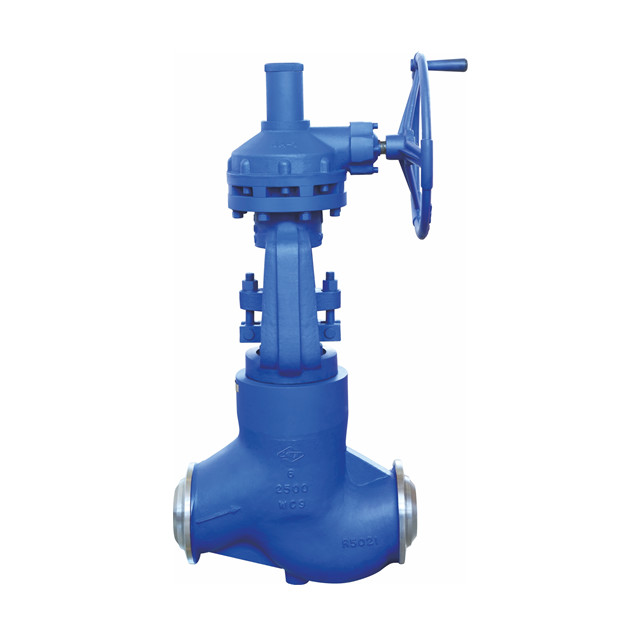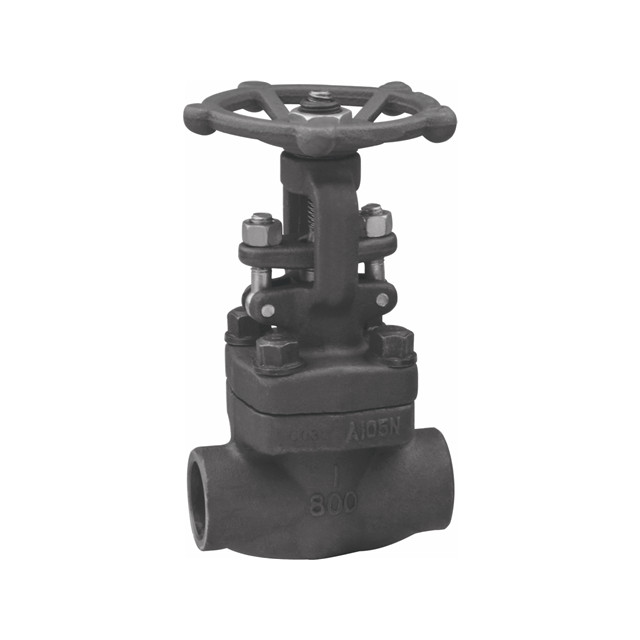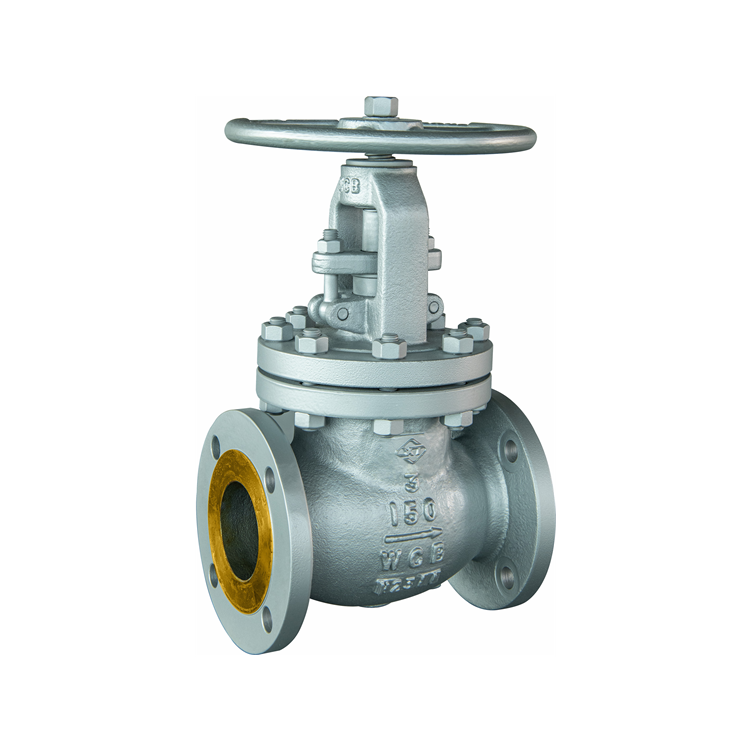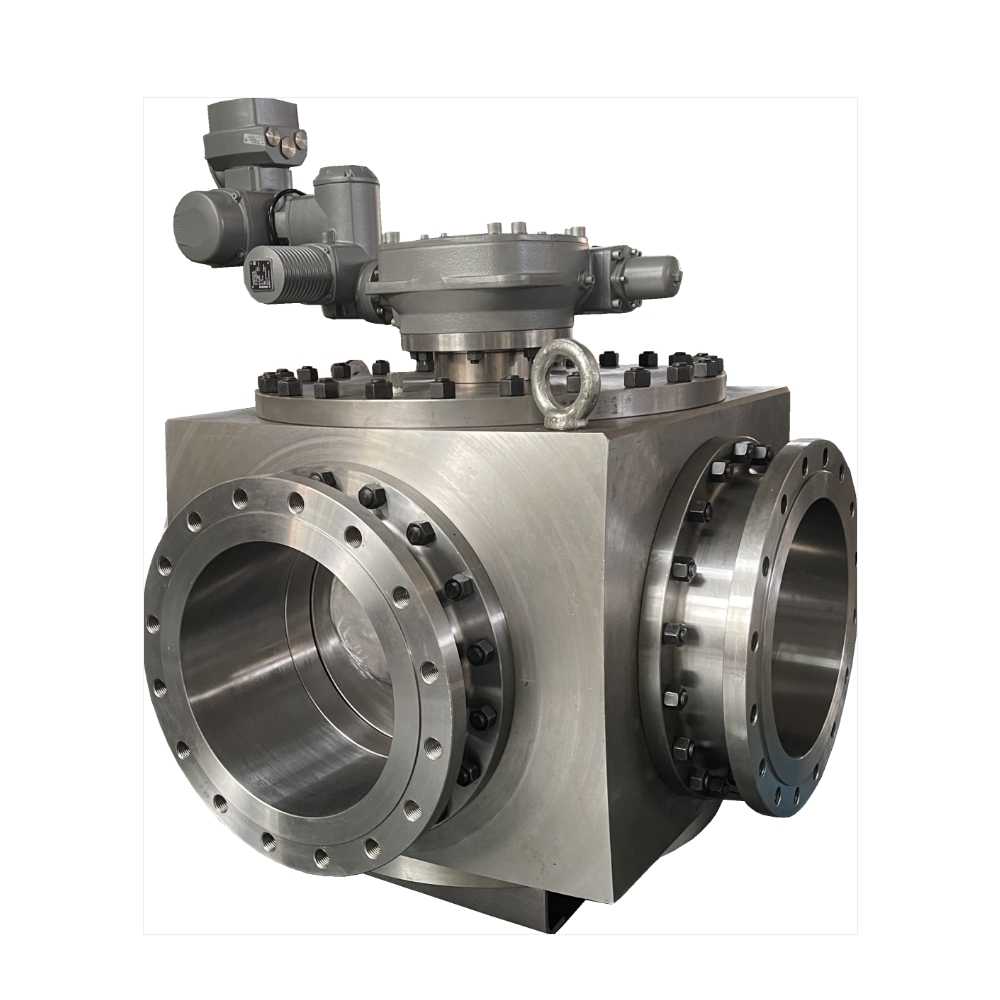In diesem Artikel behandeln wir alles, was Sie über Absperrventile wissen müssen, einschließlich ihrer Typen, Teile und Arbeitsprinzipien. Außerdem geben wir Tipps zur Auswahl des idealen Absperrventils basierend auf Faktoren wie Material, Größe und Druckgrenzen.
Kugelventile sind Regel- oder Absperrventile zur Steuerung des Flüssigkeitsflusses. Sie sind in verschiedenen Ausführungen und Konfigurationen erhältlich, um spezifische Anforderungen und Anwendungen zu erfüllen. Die Auswahl des idealen Absperrventils für Ihre Anwendung kann aufgrund der verschiedenen Formen und Designvarianten eine Herausforderung darstellen. Kugelventile sind in verschiedenen Materialien, Größen und Druckgrenzen erhältlich, um Ihren Anforderungen gerecht zu werden. Die Auswahl des richtigen Ventils ist der Schlüssel zur maximalen Leistung Ihres Ventils.
Werfen wir einen detaillierten Blick auf die Absperrventile und wie Sie das beste für Sie auswählen.
Inhaltsverzeichnis
UmschaltenWas sind Absperrventile?
A Durchgangsventil ist ein Absperrventil mit linearer Bewegung, das eine Scheibe zum Starten, Stoppen und Drosseln des Flüssigkeitsflusses verwendet. Die Sitzöffnung variiert direkt proportional zum Scheibenweg und eignet sich daher ideal für Aufgaben, bei denen die Durchflussrate gesteuert werden muss.
Hubventile können in einer Reihe von Anwendungen eingesetzt werden, z. B. Dampf- und Kondensatversorgung, Temperatur- oder Druckregelung in Rohrleitungen und sogar in der Prozesssteuerung von Kernkraftwerken. Sie sind mit verschiedenen Körper- und Vorbaudesigns erhältlich, die an spezifische Anforderungen angepasst werden können.
Kugelventilscheibenkonstruktionen gibt es in drei Grundformen: Kugel, Zusammensetzung und Stopfen. Die Kugelscheibe ist ideal für Niederdruck- oder Temperaturanwendungen, während die Verbundscheibe über einen harten Einsatzring verfügt, der einen dichten Abschluss gewährleistet. Schließlich bieten Plug-Scheiben eine bessere Drosselung als entweder Kugel- oder Verbundscheiben und können verwendet werden, wenn harte Betriebsanforderungen bestehen.
Absperrventile gibt es in mehreren Gehäuseformen, die drei beliebtesten sind Standard-, Winkel- und Y-Form. Von diesen drei Optionen ist das Standardmuster bei weitem am weitesten verbreitet und wird normalerweise zum Drosseln von Diensten verwendet.
What Are the Parts of a Globe Valve?
Ein typisches Absperrventil besteht aus folgenden Teilen:
Rücksitz
The back seat in a globe valve is positioned at the rear of the valve body.
Its primary function is to provide a secondary seating surface, preventing system leakage when the valve is fully open.
It serves as a safety feature, especially during maintenance or repairs, offering a redundant seal.
Motorhaube
The bonnet is a crucial part of the globe valve, securing the internal components and acting as a cover for the valve body.
It is attached to the valve body and houses the stem and disc assembly. The bonnet plays a key role in maintaining the integrity of the valve’s internal structure.
Scheibe oder Stecker
The disc or plug is the movable component within the globe valve that regulates the flow of fluid.
When the valve is in operation, the disc moves against the seat to either allow or block the flow.
The disc design varies based on the valve’s intended application and flow control requirements.
Stopfbuchsschrauben und Muttern
Gland bolts and nuts are used to secure the gland, which houses the packing material.
These bolts and nuts ensure proper compression of the packing, preventing leaks along the stem.
Gland Bushing and Flange
The gland bushing provides support to the stem and ensures a tight seal around the stem. The gland flange secures the gland assembly and provides structural stability to the valve.
Handwheel (Mechanical Actuator)
The handwheel serves as a manual actuator, allowing users to control the opening and closing of the valve. It is an essential component for operations requiring human intervention.
Verpackung
Packing is a sealing material placed around the stem to prevent fluid leakage along the stem. It provides a secure seal while allowing the stem to move freely during operation.
Druckdichtungsdichtung
The pressure seal gasket ensures a tight seal between the valve body and the bonnet, preventing fluid leakage under high-pressure conditions.
Seat Ring
The seat ring is a stationary part of the valve where the disc or plug makes contact to create a seal. It is essential for controlling the flow and preventing leakage.
Stengel
The stem connects the handwheel or actuator to the disc or plug, transmitting the force required to control the flow. It is a critical component for the overall functionality of the valve.
Valve Body (Globular Shape)
The valve body, typically with a globular shape, houses the internal components and provides the main structure for the valve. It features inlet and outlet ports for fluid flow.
Joch
The yoke is a bracket-like structure that supports the stem and helps in the proper alignment of the moving parts. It ensures smooth operation and stability.
Joch Ärmel
The yoke sleeve surrounds the stem and protects it from external elements. It contributes to the overall durability and longevity of the valve.
Wie funktionieren Absperrventile?
Ein Kugelventil ist ein multidirektionales Gerät, das den Flüssigkeitsfluss öffnen, schließen oder drosseln kann. Es besteht aus fünf Hauptteilen: Ventilkörper, Oberteil, Handrad, Schaft und Stopfen.
Ventilschaft: Der Schaft eines Absperrventils ist mit dem Handrad verbunden und bewirkt die Öffnungs- oder Schließbewegung des Ventils. Es kann entweder glatt gleiten oder mit Gewinde versehen sein.
Haube: Die Haube eines Absperrventils wird an der Spindel befestigt und schützt sie vor Beschädigung. Seine Dichtung aus verschleißfestem Material schließt alle Medien im Inneren des Ventils lecksicher ab.
Kugelscheibe: Die Ventilscheibe ist ein weiteres wichtiges Element eines Absperrventils, das für Niedertemperatur- und Niederdruckanwendungen verwendet wird.
Sitzring: Der Sitzring eines Absperrventils befindet sich dort, wo die Scheibe sitzt und den Flüssigkeitsfluss stoppt. Im Allgemeinen kann dieses Teil in einen vorhandenen Gewindeschnitt im Ventilkörper geschraubt oder geschraubt werden, um ein Entfernen während Reparaturen oder Wartungsarbeiten zu verhindern.
Scheiben- und Sitzfähigkeiten: Kugelventilscheiben gibt es in verschiedenen Mustern, von denen jedes seine eigenen Vorteile bietet.
Absperrventile werden normalerweise montiert, sodass der Druck bei Hochtemperaturdampfbetrieb über der Scheibe und bei Niedertemperatur- oder Niederdruckanwendungen darunter liegt. Dies erleichtert den Betrieb und schützt die Packung, während die erosive Wirkung auf Sitz- und Scheibenflächen reduziert wird.
Absperrventile sind im Allgemeinen für direkten Durchfluss ausgelegt, wobei die Anschlüsse rechtwinklig zur Rohrachse ausgerichtet sind. Sie sind jedoch in verschiedenen Konfigurationen erhältlich, meistens mit zwei Ports, aber auch mit drei Ports.
Types of Globe Valves
Kugelventile are widely used in industrial and marine applications to start, stop, and regulate flow, as well as isolate and throttle functions.
Angle Globe Valve
Angle globe valves, also known as Y-pattern globe valves, are designed with an angled body that allows for a change in flow direction.
This design is particularly useful in applications where space is limited or when a more convenient flow path is required.
Angle globe valves find applications in various industries, including petrochemical, chemical, and oil and gas, where they are commonly used for throttling and control.
T-pattern Globe Valve
T-pattern globe valves, or straight-pattern globe valves, feature a straight-through flow path, making them suitable for applications where minimal pressure drop is crucial.
These valves are often preferred in systems with high-velocity flows, such as steam applications.
T-pattern globe valves are commonly utilized in power plants, steam distribution systems, and other industrial settings.
Bellows-sealed Globe Valve
Bellows-sealed globe valves incorporate a bellows element that provides an additional barrier between the process fluid and the environment.
This design enhances the valve’s ability to prevent leakage, making it ideal for applications involving hazardous or toxic fluids.
Bellows-sealed globe valves are frequently employed in chemical processing, pharmaceuticals, and other industries where leak-tight performance is critical.
Kryo-Absperrventil
Cryogenic globe valves are specially designed to operate in extremely low-temperature environments, such as those found in liquefied natural gas (LNG) facilities and cryogenic storage systems.
These valves are equipped with materials and features that ensure reliable performance under cryogenic conditions, providing effective control over the flow of cryogenic fluids.
Stop-check Globe Valve
Stop-check globe valves combine the functionalities of both a globe valve and a check valve.
They allow for throttling or complete shutoff of fluid flow while also preventing backflow.
These valves are commonly used in applications where the prevention of reverse flow is essential, such as in boiler feedwater systems and high-pressure steam lines.
Pressure-seal Globe Valve
Pressure-seal globe valves are designed to handle high-pressure applications, featuring a unique construction that enhances their ability to withstand elevated pressures.
These valves are commonly used in power generation, oil and gas pipelines, and other systems where high pressures are encountered.
The pressure-seal design ensures reliable performance and tight sealing under demanding conditions.
Was ist das? Anwendung des Kugelventils
Ein Absperrventil ist eine Art Ventil, das den Flüssigkeitsfluss einschränkt oder stoppt. Sie sind häufig in Rohrleitungssystemen zu finden, die korrosive, viskose oder unter hohem Druck stehende Medien transportieren.
Sie sind in einer Reihe von Mustern erhältlich, von denen jedes seine eigenen Vorteile bietet. Darüber hinaus macht ihre einfache Wartung und Reparatur- oder Austauschfähigkeit sie zu einer wirtschaftlichen Wahl für viele Anwendungen.
Wie der Name schon sagt, haben Absperrventile einen kugelförmigen Körper. Zwei Hälften dieses Absperrventils sind durch ein inneres Leitblech getrennt, das eine Öffnung enthält, die als Sitz zum Anbringen eines beweglichen Stopfens dient, um das Ventil zu schließen (oder zu schließen).
Kugelventile sind weit verbreitete Industrieventile, die den Flüssigkeitsfluss starten, stoppen und drosseln können. Sie sind häufig in Systemen zu finden, die eine häufige Drosselung oder Regelung erfordern, wie z. B. Vakuumsysteme, die Kontrolle von Wasserschlägen und Systeme, die bei unterschiedlichen Temperaturen arbeiten.
Pros and Cons of Globe Valves
Pros of Globe Valves
Präzise Durchflusskontrolle: Globe valves excel at providing precise control over the flow of fluids.
Their design allows for accurate throttling, making them suitable for applications that require fine adjustments to the flow rate.
Vielseitigkeit: Globe valves are versatile and find application in a wide range of industries, including petrochemical, chemical processing, power generation, and water treatment.
They are well-suited for various fluid types, temperatures, and pressures.
Good Shut-Off Capability: Globe valves offer excellent shut-off capability, ensuring a tight seal when closed.
This makes them effective in preventing backflow and leakage, contributing to their reliability in critical systems.
Sturdy Construction: These valves are often built with robust materials, enhancing their durability and longevity.
The materials used in their construction can be selected based on the specific requirements of the application.
Ideal for Throttling: The globe valve’s design, with a disc or plug that can be moved against the flow, makes it well-suited for throttling applications.
This feature allows for precise control over the flow rate.
Cons of Globe Valves
Druckverlust: Globe valves can cause a significant pressure drop across the valve, particularly in fully open positions.
This can impact system efficiency, and in high-pressure systems, it may require additional energy to overcome the pressure drop.
Size and Weight: Globe valves can be relatively large and heavy compared to other types of valves.
In applications where space and weight are critical considerations, the size and weight of globe valves may pose challenges.
Slower Operation: Compared to some other valve types, such as ball valves, globe valves generally have slower opening and closing times.
This slower operation may be a limitation in systems requiring rapid response times.
Complex Design: The internal design of globe valves can be more complex than that of some other valves.
This complexity may result in higher manufacturing costs and increased maintenance requirements.
Limited Use in High-Flow Applications: Globe valves are not always the best choice for high-flow applications, especially where minimal resistance and pressure drop are crucial.
In such cases, other valve types like butterfly or ball valves might be more suitable.
How to Choose Between Globe Valve vs. Ball Valve
Bei der Auswahl von Sanitärkomponenten sind zwei primäre Ventiltypen zu berücksichtigen: Globus und Kugel. Beide bieten zuverlässige Ein-/Aus-Steuerungen mit deutlichen Vorteilen, die es für Ihr Projekt wert sein könnten, in Betracht gezogen zu werden.
Bei der Auswahl eines Ventils zum Steuern, Starten oder Stoppen des Durchflusses in einem Flüssigkeitssystem ist es wichtig zu wissen, welcher Typ für Ihre Anwendung am besten geeignet ist. Die beiden häufigsten Arten von Flüssigkeitsregelventilen sind Durchgangs- und Kugelhähne.
Kugelhähne und Kugelventile unterscheiden sich dadurch, dass sie zum Öffnen eine Scheibe verwenden, während Kugelventile eine Kugel mit einem integrierten Loch verwenden. Wenn man das Ventil öffnet, kann Flüssigkeit hindurchströmen, während sich die Kugel dreht und im geschlossenen Zustand den Durchgang blockiert.
Der Hauptunterschied zwischen einem Kugelhahn und einem Durchgangsventil liegt in ihren Verschlusselementen. Ein Kugelhahn weist ein kugelförmiges Verschlusselement auf, das gegen einen Innensitz abdichtet; Sitzventile hingegen haben scheibenförmige Schließelemente, die auf einen Außensitz passen.
About Xintai: A Trusted Valve Manufacturer
XINTAI Valve bietet eine umfassende Auswahl an Ventilen, wie z. B. Durchgangsventile, Rückschlagventile, Kugelventile, Absperrklappen und Luft-/Sauerstoff-Steuerventile. Ihr Produktsortiment umfasst sechs Kategorien und Tausende von Sorten. XINTAI hat das Vertrauen seiner Kunden durch die Herstellung hochwertiger Gusskugeln und Rückschlagkeilventile für verschiedene Anwendungen gewonnen.
Das XINTAI-Ventil Absperrventil aus Stahlguss ist aufgrund seines geringen Widerstands und des dichten Schließmechanismus in vielen Anwendungen der am häufigsten verwendete Ventiltyp. Dieses einfache Ventil ist nicht nur einfach zu installieren, sondern auch sehr langlebig, wodurch es für den Einsatz in Niedertemperatur-Mediensystemen geeignet ist.














